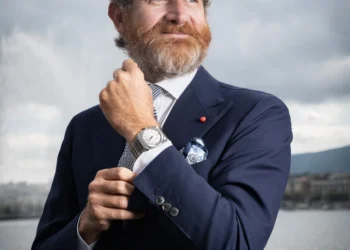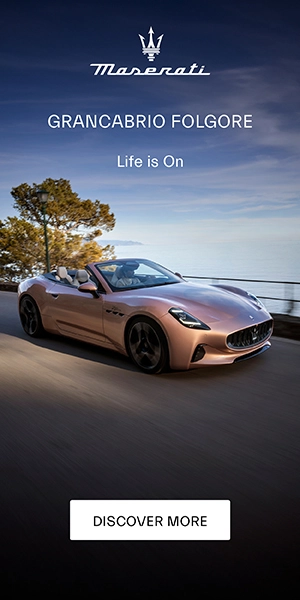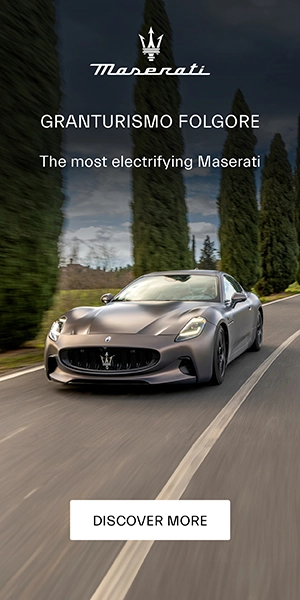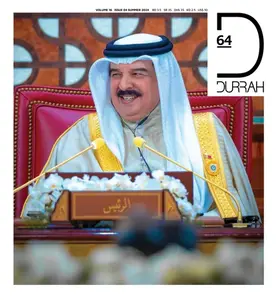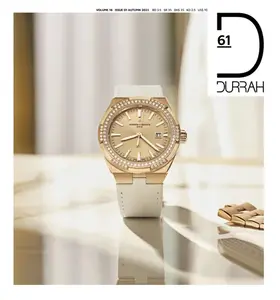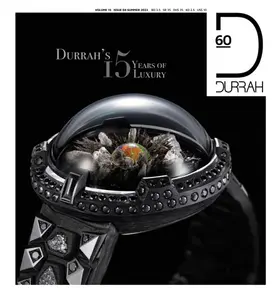WHAT ARE THE KEY DESIGN PRINCIPLES THAT GUIDE IWC WATCHMAKING PHILOSOPHY?
Our timepieces often originate as instrument watches. Take the Portugieser, which debuted in 1939. It was a wristwatch requiring marine chronometer precision, akin to the accuracy and robustness of pocket watches. This unique design incorporated a pocket watch movement into a wristwatch. This spirit of precision instruments underpins all our watch families, like the Pilot’s Watches and the Aquatimer. This heritage forms the DNA of every IWC timepiece.
HOW DO YOU BALANCE TRADITION AND INNOVATION WHEN DESIGNING A NEW TIMEPIECE?
Each new collection walks a fine line between tradition and innovation. Our designs must be unmistakably IWC while surprising customers with new ideas, colors, and details. With so many new and well-designed watches hitting the market weekly, recognizability is essential. Each watch strengthens our brand identity while introducing innovative elements.
HOW DO YOU ENSURE THAT EACH IWC WATCH TELLS A STORY AND EVOKES EMOTIONS?
Every IWC watch tells a story grounded in the collection’s heritage. The new Perpetual Calendar showcases our engineers’ and watchmakers’ prowess and reflects the culture of innovation at IWC. The story goes beyond partnerships with cars or planes. It’s about who we are in the fine watchmaking world.
WATCH TELLS A STORY AND EVOKES EMOTIONS?
Every IWC watch tells a story grounded in the collection’s heritage. The new Perpetual Calendar showcases our engineers’ and watchmakers’ prowess and reflects the culture of innovation at IWC. The story goes beyond partnerships with cars or planes. It’s about who we are in the fine watchmaking world.
WHAT ROLE DO MATERIALS AND CRAFTSMANSHIP PLAY IN THE DESIGN PROCESS?
We are pioneers in materials like titanium and ceramics. Inside our timepieces, we innovate with high-precision gears and silicon escapement wheels using diamond shell technology. This patented process creates ultra-lightweight parts with reduced friction and abrasion. Photolithography allows us to craft precise components for intricate complications like the moon display.
WHAT CHALLENGES AND OPPORTUNITIES ARISE WHEN YOU’RE DESIGNING FOR COMPLICATIONS OR SPECIAL FEATURES?
Complicated watches tend to grow larger with added functions. We’ve addressed this in the Perpetual Calendar by minimizing visual case height with glass boxes on the top and bottom. This innovation not only creates a lighter look but also strengthens the case. Our new designs now boast five-bar water resistance, up from three-bar in older models.
HOW LONG DOES THE DESIGN PROCESS TYPICALLY TAKE?
It typically takes about a year from sketch to final design. From there, we need another year or more for testing and prototyping, plus time to create production tools. Depending on complexity, the entire process can span two to three years.
HOW DOES IWC CATER TO THE DIVERSE TASTES AND PREFERENCES OF ITS GLOBAL AUDIENCE?
Our global product portfolio, including the Pilots, Portugieser, Portofino, and Aquatimer collections, reflects varied tastes. Different proportions appeal to different regions, but today’s well-traveled generation has developed international tastes, so we infuse cultural influences across our collections.



















